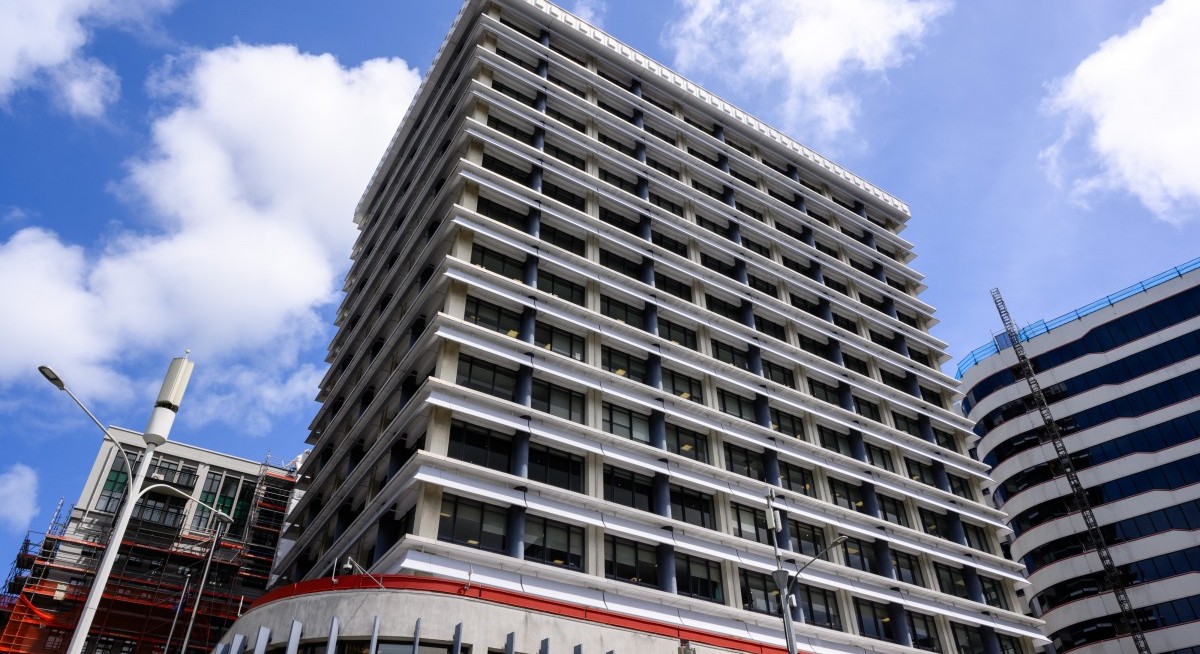(Nov 26): New Zealand’s central bank cut interest rates to a fresh three-year low to support a nascent economic recovery, while the currency gained on bets the easing cycle is approaching an end.
The Reserve Bank’s (RBNZ) Monetary Policy Committee lowered the official cash rate (OCR) by 25 basis points to 2.25% on Wednesday in Auckland, as expected by 21 of 24 economists in a Bloomberg survey. The RBNZ’s new forecasts indicate a small chance of one more 25-point cut next year.
“The committee noted that a reduction in the OCR would help to underpin consumer and business confidence and lean against the risk that the economy recovers more slowly than needed to meet the inflation objective,” the RBNZ said. “Future moves in the OCR will depend on how the outlook for medium-term inflation and the economy evolve.”
The New Zealand dollar climbed as much as 1.1% while yields on policy-sensitive two-year government bonds rose six basis points to 2.64% on wagers the RBNZ’s easing cycle may be near an end.
With inflation forecast to slow towards the middle of the RBNZ’s 1-3% target range, most economists think policymakers have likely finished easing this cycle. Still, the risk that the economy fails to respond as expected to the monetary stimulus delivered to date justifies keeping the door ajar to another cut if needed.
See also: Bessent says Trump and Xi may meet four times next year
Governor Christian Hawkesby will hold a press conference at 3pm local time on Wednesday, his last before Sweden’s Anna Breman replaces him on Dec 1.
Majority vote
The committee voted five-one in favour of a 25-point cut on Wednesday, with the minority preferring no change, according to the record of meeting.
See also: Thailand posts biggest trade deficit since 2023 as imports surge
“The case for holding the OCR emphasised the considerable reduction in the OCR to date, which is still working its way through the economy,” the RBNZ said. “The case for a further reduction in the OCR emphasised significant excess capacity in the economy. This provides confidence that medium-term inflation will return to, and remain around, the target midpoint.”
The RBNZ’s forward guidance shows the average OCR falling to 2.2% in the second quarter next year, implying a 20% chance of a another cut. It forecasts the benchmark will be 2.28% by the end of 2026.
After starting its easing cycle in August 2024, the RBNZ has been one of the most aggressive rate cutters among its peers, lowering the OCR by 325 points and pausing just once in 10 meetings over that period.
By contrast, the US Federal Reserve has delivered 150 points of reductions since September 2024, while the Reserve Bank of Australia has cut by only 75 points.
Lower borrowing costs will be welcomed by the centre-right government, which is promising to restore economic growth as it eyes an election due in late 2026.
The RBNZ forecasts economic growth will accelerate in 2026 while inflation will slow. It expects gross domestic product will grow an annual average 2.8% in the 12 months through March 2027 from just 0.5% in the period through March 2026.
“Economic activity was weak over mid-2025 but is picking up,” the bank said. “Lower interest rates are encouraging household spending, and the labour market is stabilising. The exchange rate has fallen, supporting exporters’ incomes.”
The RBNZ expects inflation will ease to 2.1% in the third quarter next year from 3% currently, and will reach 2% a year later.
Uploaded by Tham Yek Lee





